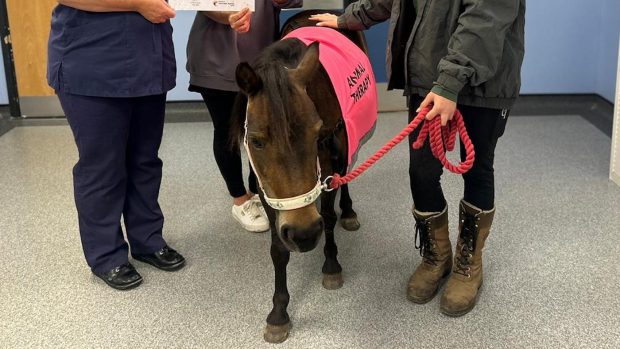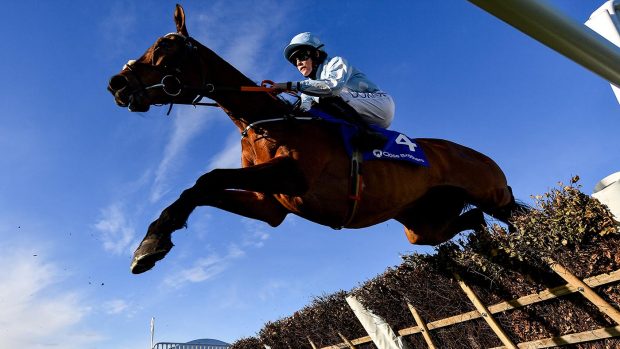Hello! We’re busy as ever here at the Equine Therapy Centre at Hartpury College at the moment and have some lovely horses in. So often the issues we have to address are the very fundamentals of a horse’s way of going. In particular, straightness, rhythm and balance are often compromised when horses are injured or in pain, due to their natural instinct to compensate and carry on.
We currently have a classic case of this is in Dude, a 12-year-old Trakehner gelding, who was admitted for back pain initially. Following X-rays to diagnose the cause, vet Claire Gilbert injected steroid into the spaces between the dorsal processes of the impinging vertebrae to reduce the inflammation and discomfort.
He also has a scoliosis, which is when the spine is effectively shaped like an ‘S’ (pictured top). His left hindquarter was wasted and he moved on 3 tracks, hooked right, as can be seen in the video (below).
We started him on a programme of controlled exercise after his vet treatment and had farrier Jim Slimmings here last week to address his foot balance. This included a special  left hind shoe on to which he welded an extra weight, applied as a lateral extension (pictured right). The extension is equivalent of 60grams, so not exactly an Olympic deadlift, but it’s positioning and weight is enough to make the left hind move straight, which in turn has improved his overall straightness. Never a truer word said than ‘no foot no horse’, shoeing is one of the most important factors in the success of all of our cases, regardless of the nature of the injury or problem.
left hind shoe on to which he welded an extra weight, applied as a lateral extension (pictured right). The extension is equivalent of 60grams, so not exactly an Olympic deadlift, but it’s positioning and weight is enough to make the left hind move straight, which in turn has improved his overall straightness. Never a truer word said than ‘no foot no horse’, shoeing is one of the most important factors in the success of all of our cases, regardless of the nature of the injury or problem.
Like all of the horses, Dude works twice a day, 7 days a week. This allows us the flexibility to include different types of exercise and reduces the negative effects of fatigue. Currently he works on the treadmill and is lunged each day, including raised pole work to push the weak left hind a bit harder. The rhythm and swing of his trot was as afflicted as his straightness and to start with he would just rush around when lunged. We’re really getting somewhere now though; he’s a lovely chap who is starting to get his swagger back which is really good to see.
Teamwork makes the dream work
Establishing a diagnosis in any case is the vet’s job, and every one of the 8 horses we take at any one time will have a vet attached to them. We receive referrals from throughout the UK and abroad, but often they will be sent via Three Counties Equine Hospital, whom we work in partnership with. We keep in regular contact with the vet overseeing each case; they tell us what to do and when to do it, and we inform them of all progress. This means that if we do hit a problem we can discuss it with them straight away and stop it from escalating.
We will often have a therapist involved with each horse too, particularly those with multiple issues. Chartered osteopath Liz Launder has been the beating heart of a huge number of our cases since we opened in 1999 and still comes here at least one day a week. We joke that she has an eagle eye; her ability to make sense of complicated symptoms is amazing. Invariably this eye falls on my team and I too — I’ve been told off for my terrible posture more times than I care to remember! Uncompromisingly brilliant, and brilliantly uncompromising, both apply.
We are also associated with a pair of superb ACPAT physiotherapists, Sarah Price and Jo Wookie, who work under the banner of Sarah Price Physiotherapy. This partnership is much newer than our association with Liz, but nonetheless exciting for us. Working with Sarah and Jo brings a new skill set to our repertoire and we believe that this collaborative approach is the future of equine therapy. After all, you only have to look to human sport to see that any top athlete will have an extensive list of professionals at their disposal at any one time; surely this is the best approach for our equine athletes too?
And on that bombshell… I’ll say goodbye for now!
Fizz





